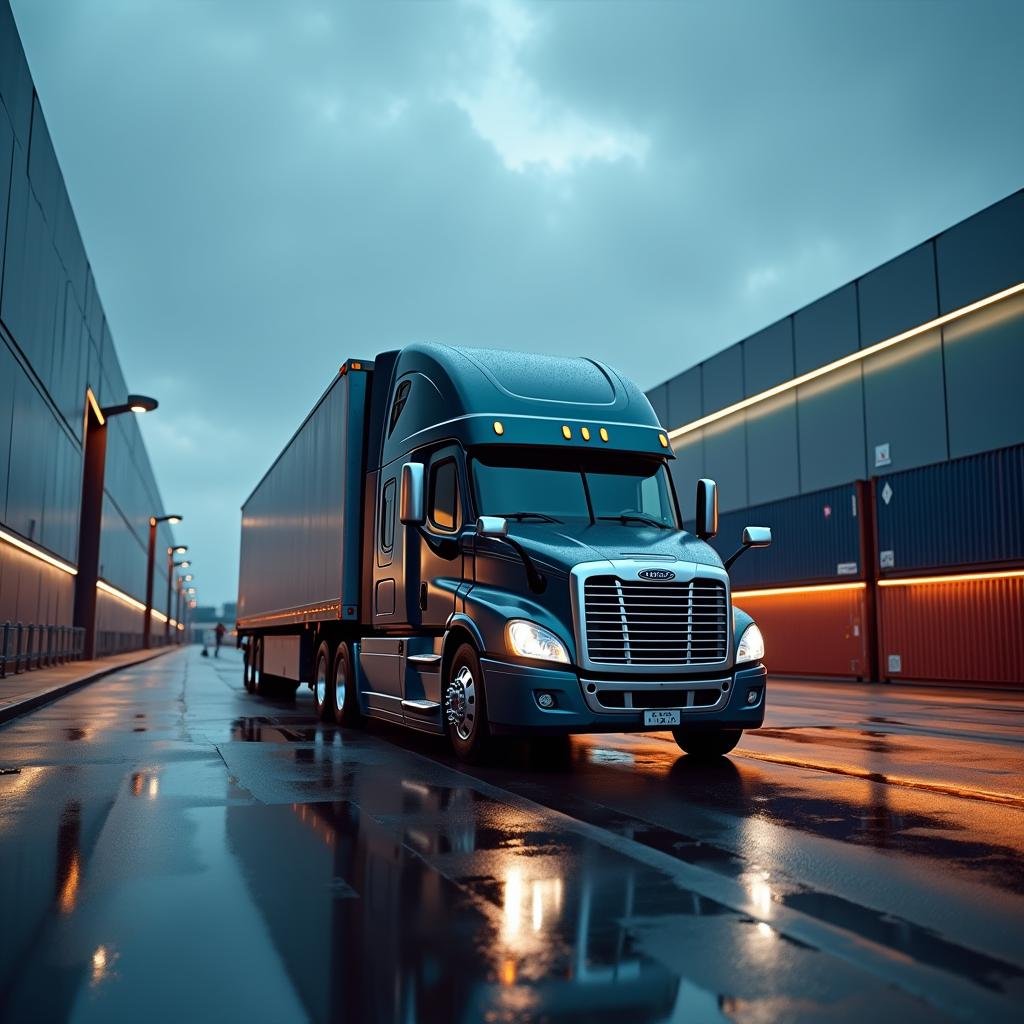In today’s rapidly evolving global marketplace, freight and logistics solutions are undergoing a technological revolution. Companies that fail to embrace these innovations risk falling behind competitors who leverage technology to optimize operations, reduce costs, and enhance customer service. The transportation and logistics industry, valued at over $9.1 trillion globally, continues to grow as e-commerce expands and supply chains become increasingly complex. For logistics professionals and business owners alike, understanding the latest tech trends isn’t just beneficial—it’s essential for survival and growth.
Why Technology is Transforming Freight and Logistics
The freight and logistics sector has historically been slow to adopt new technologies. However, recent global challenges—from the COVID-19 pandemic to ongoing supply chain disruptions—have accelerated digital transformation across the industry. Companies that implement innovative freight and logistics solutions are experiencing significant competitive advantages.
According to a McKinsey report, logistics companies that embrace automation and digital technologies can expect to see productivity improvements of 25-40% and cost reductions of 15-30%. These aren’t just incremental gains—they represent transformative potential for businesses operating on thin margins.
Let’s explore nine technology trends that are reshaping the industry and how your business can implement them to stay ahead.
AI and Machine Learning: The Brains Behind Modern Logistics
Artificial intelligence and machine learning stand at the forefront of freight logistics technology innovations. These technologies are no longer futuristic concepts but practical tools delivering real-world benefits today.
Predictive Analytics for Route Optimization
AI algorithms can analyze historical data, real-time traffic conditions, weather patterns, and other variables to determine the most efficient delivery routes. This reduces fuel consumption, minimizes delivery times, and increases operational efficiency.
For example, AI-powered systems can:
- Predict potential delays before they occur
- Automatically reschedule shipments when disruptions happen
- Calculate optimal loading configurations for trailers and containers
- Recommend the best carrier options based on cost, reliability, and transit time
Demand Forecasting and Inventory Management
Machine learning models excel at identifying patterns in consumer behavior and market trends. For logistics providers, this translates to more accurate demand forecasting, allowing for better resource allocation and inventory management.
By implementing AI-driven supply chain management systems, companies can reduce excess inventory costs while ensuring they have sufficient stock to meet customer demands—a delicate balance that directly impacts the bottom line.
IoT and Connected Devices: Creating Visibility Throughout the Supply Chain
The Internet of Things (IoT) has revolutionized how freight and logistics companies track and monitor shipments, assets, and infrastructure. Connected sensors provide real-time data that was previously impossible to capture.
Real-Time Tracking and Monitoring
IoT devices attached to containers, pallets, or individual packages enable continuous visibility throughout the shipping process. These sensors can monitor:
- Location and movement
- Temperature and humidity levels
- Shock and vibration
- Container fill levels
- Door openings (security)
For temperature-sensitive goods like pharmaceuticals or food products, IoT-enabled monitoring is particularly valuable. If conditions deviate from acceptable parameters, the system can immediately alert stakeholders, potentially saving entire shipments from spoilage.
Fleet Management and Preventive Maintenance
For logistics companies operating vehicle fleets, IoT sensors can monitor engine performance, fuel consumption, tire pressure, and driving behaviors. This data enables:
- Preventive maintenance schedules based on actual usage rather than arbitrary timeframes
- Fuel savings through identification of inefficient routes or driving habits
- Reduced downtime through early detection of potential mechanical issues
- Compliance with driver hours-of-service regulations
By implementing IoT-based fleet management solutions, companies can extend vehicle lifespans, reduce maintenance costs, and improve overall operational efficiency.
Blockchain Technology: Building Trust and Transparency
Blockchain technology offers a revolutionary approach to tracking and verifying transactions across complex supply chains. For freight and logistics solutions, blockchain provides immutable records that all authorized parties can access, creating unprecedented transparency.
Smart Contracts and Automated Payments
Smart contracts—self-executing contracts with the terms directly written into code—can automate payments when predefined conditions are met. For example, a smart contract might automatically release payment to a carrier when IoT sensors confirm a shipment has been delivered at the right location, in the correct condition, and on time.
This automation reduces administrative overhead, eliminates payment delays, and minimizes disputes between parties.
Supply Chain Transparency and Authentication
Counterfeiting and product diversion cost businesses billions annually. Blockchain creates an unalterable record of a product’s journey from manufacturer to end consumer, making it nearly impossible to introduce counterfeit goods into legitimate supply chains.
For industries like pharmaceuticals, luxury goods, and food, this chain-of-custody verification provides critical protection against fraud and helps ensure product authenticity.
Autonomous Vehicles and Robotics: The Future of Movement
While fully autonomous trucks on public highways may still be years away from widespread adoption, many forms of automation are already transforming warehouses and logistics operations today.
Warehouse Automation
Robotic systems are revolutionizing warehouse operations through:
- Autonomous mobile robots (AMRs) that navigate warehouses to pick items and transport them
- Robotic arms for sorting, packing, and palletizing
- Automated storage and retrieval systems (AS/RS) that maximize warehouse space utilization
- Conveyor systems with automatic scanning and routing capabilities
These technologies dramatically increase picking accuracy, reduce labor costs, and allow warehouses to operate 24/7 with minimal human intervention.
Last-Mile Delivery Innovations
The “last mile” of delivery remains the most expensive and logistically challenging part of the shipping process. Innovative solutions include:
- Autonomous delivery vehicles for urban environments
- Delivery drones for rural or hard-to-reach locations
- Robotic delivery carts for campuses and contained areas
- Smart lockers and pickup points to consolidate deliveries
By implementing autonomous last-mile delivery solutions, companies can reduce delivery costs while improving speed and reliability—a critical advantage as consumer expectations for rapid delivery continue to rise.
Cloud-Based Logistics Platforms: Accessibility and Scalability
Cloud computing has transformed how logistics software is deployed, accessed, and scaled. Modern freight and logistics solutions increasingly rely on cloud platforms that offer flexibility and reduced IT overhead.
Transportation Management Systems (TMS)
Cloud-based TMS platforms enable logistics providers to:
- Plan and optimize shipments across multiple carriers and modes
- Automatically tender loads to the most appropriate carriers
- Track shipments in real-time
- Manage documentation electronically
- Analyze transportation costs and performance
Unlike legacy on-premise systems, cloud TMS solutions can be accessed from anywhere with an internet connection, making them ideal for today’s increasingly remote workforce. They also scale seamlessly as business volumes grow or contract.
Warehouse Management Systems (WMS)
Modern cloud-based WMS platforms integrate with other supply chain technologies to provide:
- Real-time inventory visibility
- Optimized picking routes and methods
- Labor management and productivity tracking
- Integration with robotics and automation systems
- Advanced analytics on warehouse performance
By implementing cloud-based logistics software, companies gain the agility to adapt quickly to changing market conditions while reducing the capital expenditure traditionally associated with enterprise software deployments.
Implementing Technology in Your Logistics Operation
With so many technology options available, how should companies approach modernizing their freight and logistics solutions? Here’s a practical roadmap:
Start with a Strategic Assessment
Before investing in new technologies:
- Identify your biggest pain points – Where are you losing money, time, or customers?
- Assess your current technology stack – What systems do you already have in place?
- Evaluate your team’s capabilities – Do you have the necessary skills in-house, or will you need partners?
- Define clear objectives – What specific metrics are you trying to improve?
Prioritize Quick Wins
Start with technologies that offer the fastest return on investment:
- Cloud-based TMS and WMS systems typically provide immediate efficiency gains
- IoT tracking solutions can quickly improve visibility and customer service
- Predictive analytics can be applied to existing data for rapid insights
Build a Phased Implementation Plan
Technology adoption should be approached as a journey, not a destination:
- Phase 1: Implement foundation systems and basic automation
- Phase 2: Add advanced analytics and optimization tools
- Phase 3: Integrate emerging technologies like blockchain and autonomous systems
This measured approach allows your team to adapt to changes gradually while demonstrating ROI at each stage—making it easier to secure continued investment for further innovations.
Focus on Integration
The most successful technology implementations prioritize seamless integration between systems. Ensure your chosen solutions can communicate effectively with:
- Existing enterprise systems (ERP, CRM, etc.)
- Partner and customer platforms
- Regulatory and compliance systems
- Financial and accounting software
APIs (Application Programming Interfaces) and middleware solutions can connect disparate systems, creating a unified technology ecosystem that maximizes the value of each component.
Conclusion: The Time to Act is Now
The freight and logistics industry is at a technological inflection point. Companies that embrace innovative freight and logistics solutions gain substantial advantages in efficiency, cost control, and customer satisfaction. Those that delay risk falling irretrievably behind more agile competitors.
From AI-powered route optimization to blockchain-secured supply chains, the technologies we’ve explored offer transformative potential for logistics operations of all sizes. The key is to start with a clear strategy, prioritize initiatives based on business impact, and implement changes in manageable phases.
Remember that technology implementation is not merely an IT project—it requires collaboration across departments, thoughtful change management, and ongoing evaluation and adjustment. The most successful digital transformations align technology with people and processes to create lasting operational improvements.
As you consider which technologies to adopt in your logistics operation, we invite you to partner with our team of experts. We specialize in helping logistics companies navigate the complex landscape of technology options and implement solutions that deliver measurable business results.
Ready to transform your freight and logistics operations with cutting-edge technology? Submit our consultation form today, and one of our specialists will help you develop a customized technology roadmap tailored to your specific business needs and objectives.


